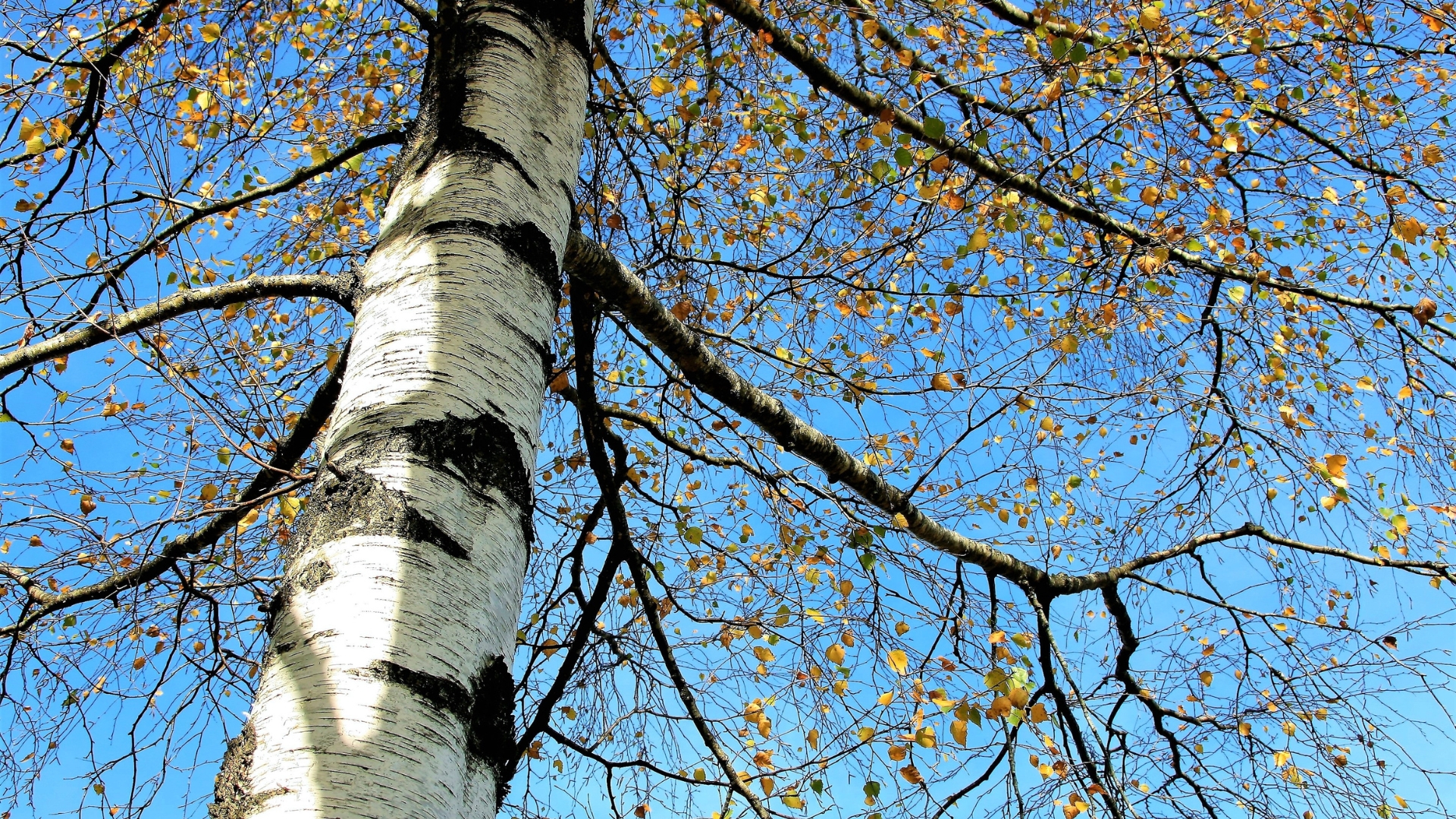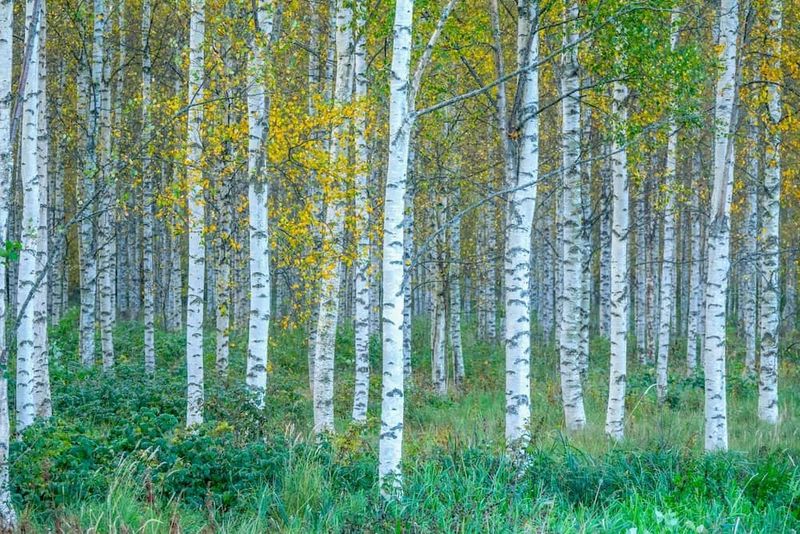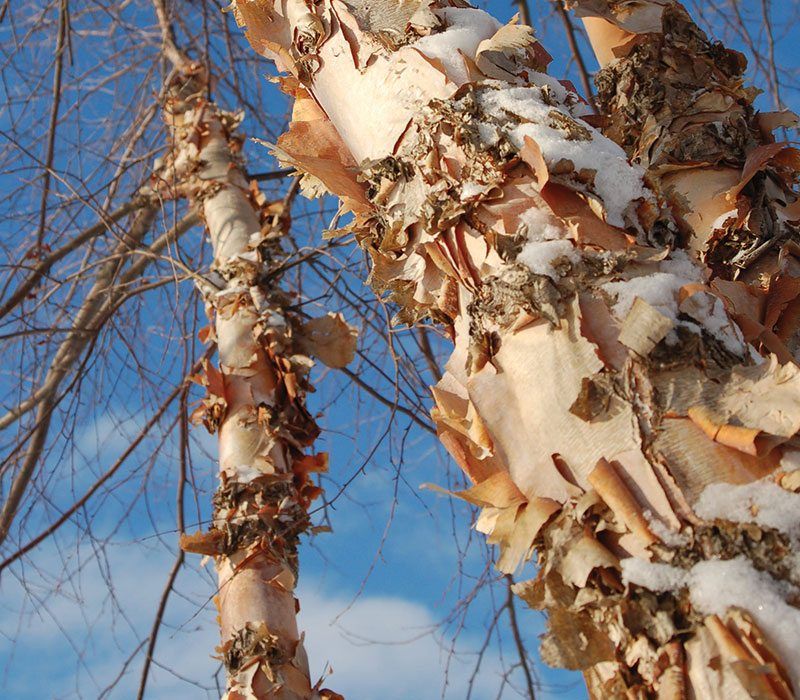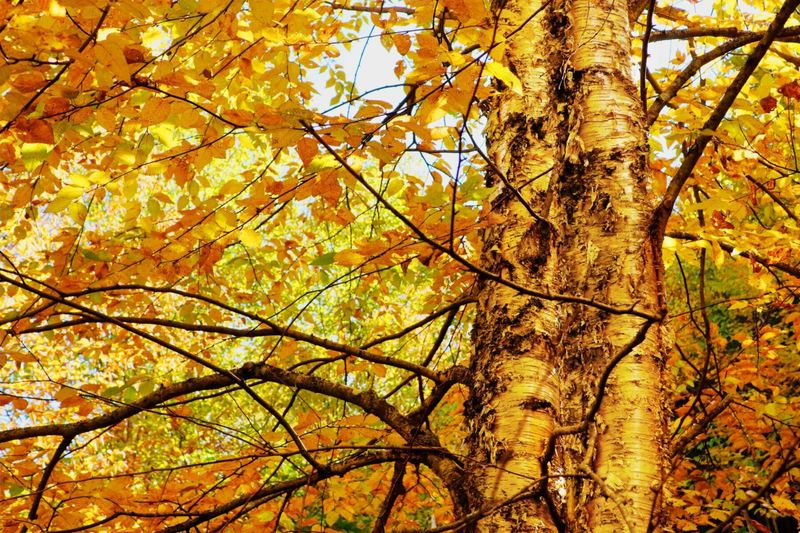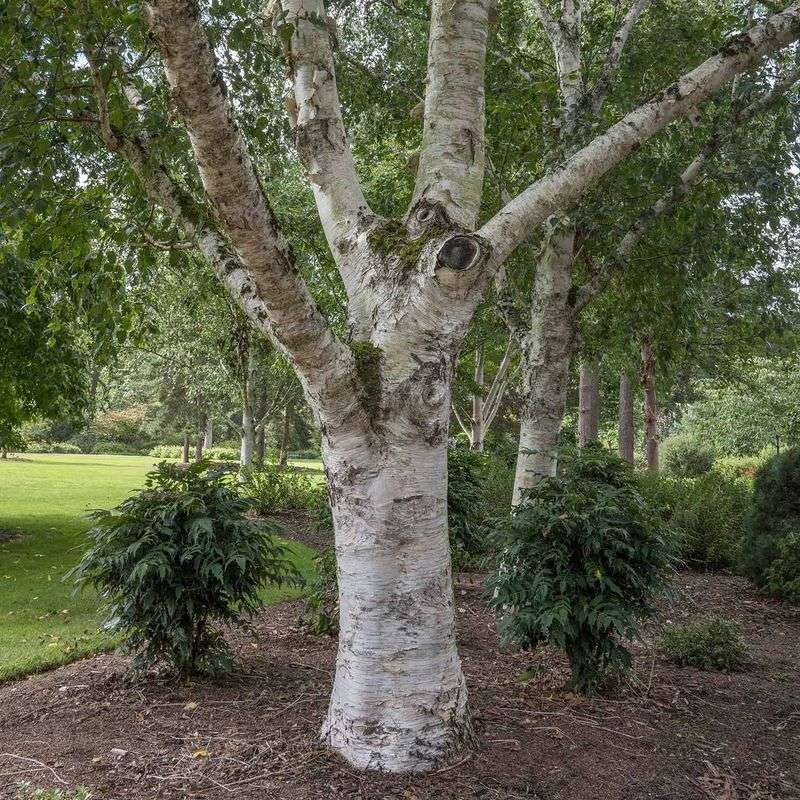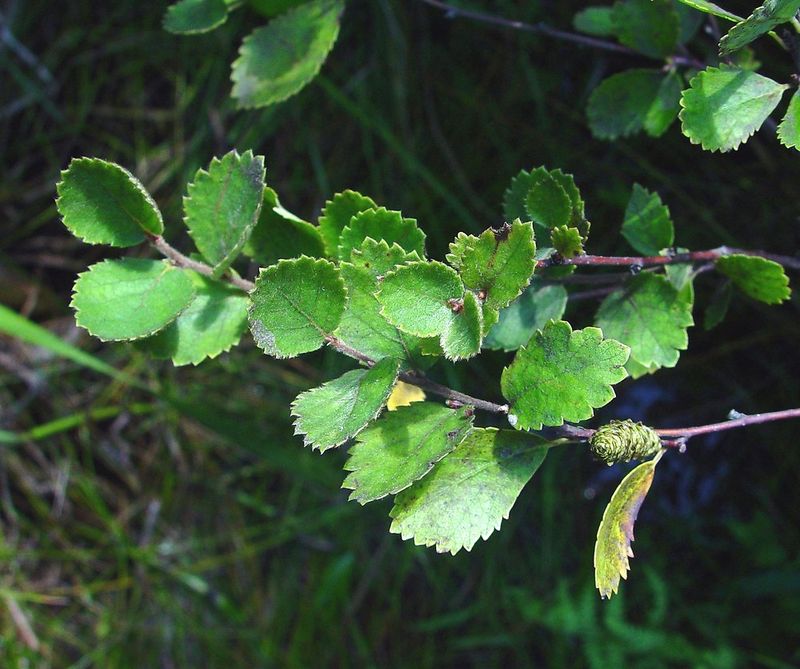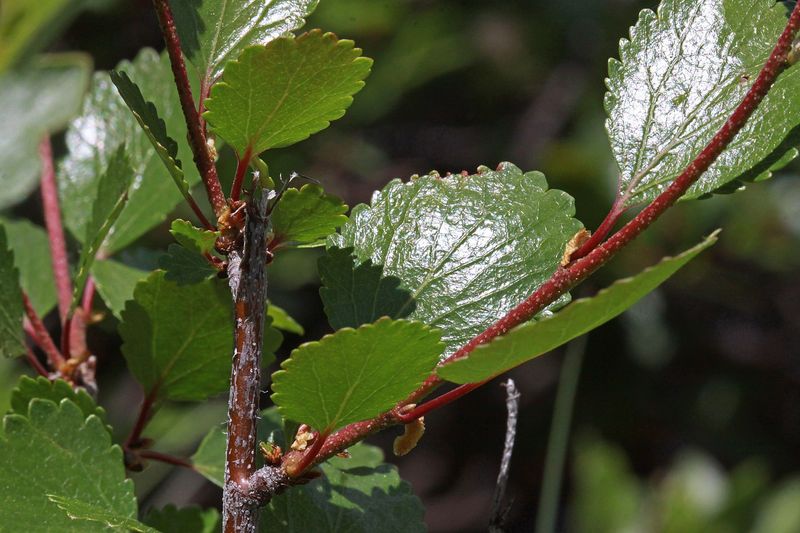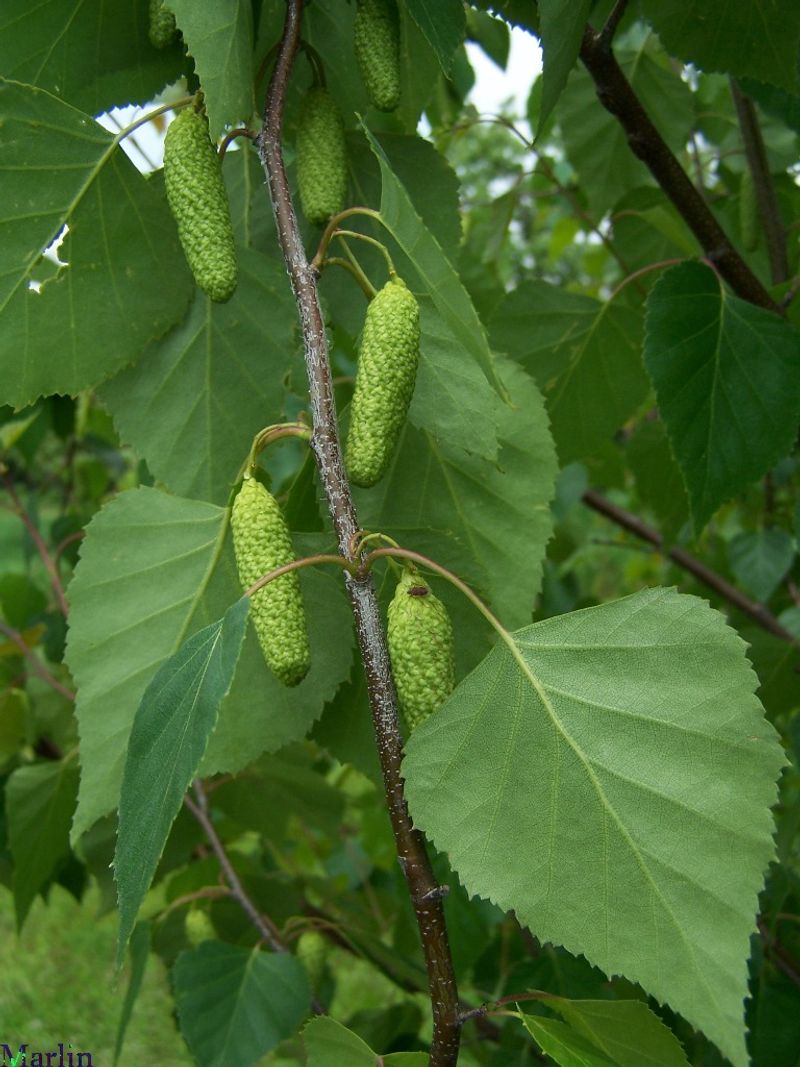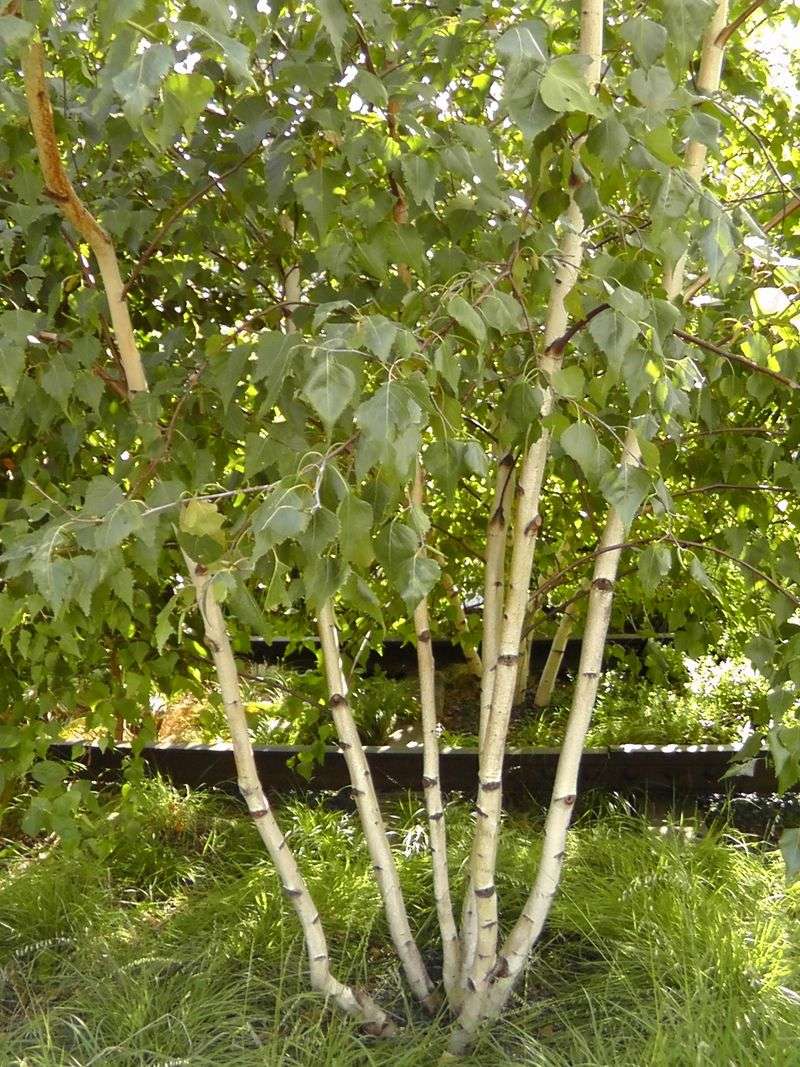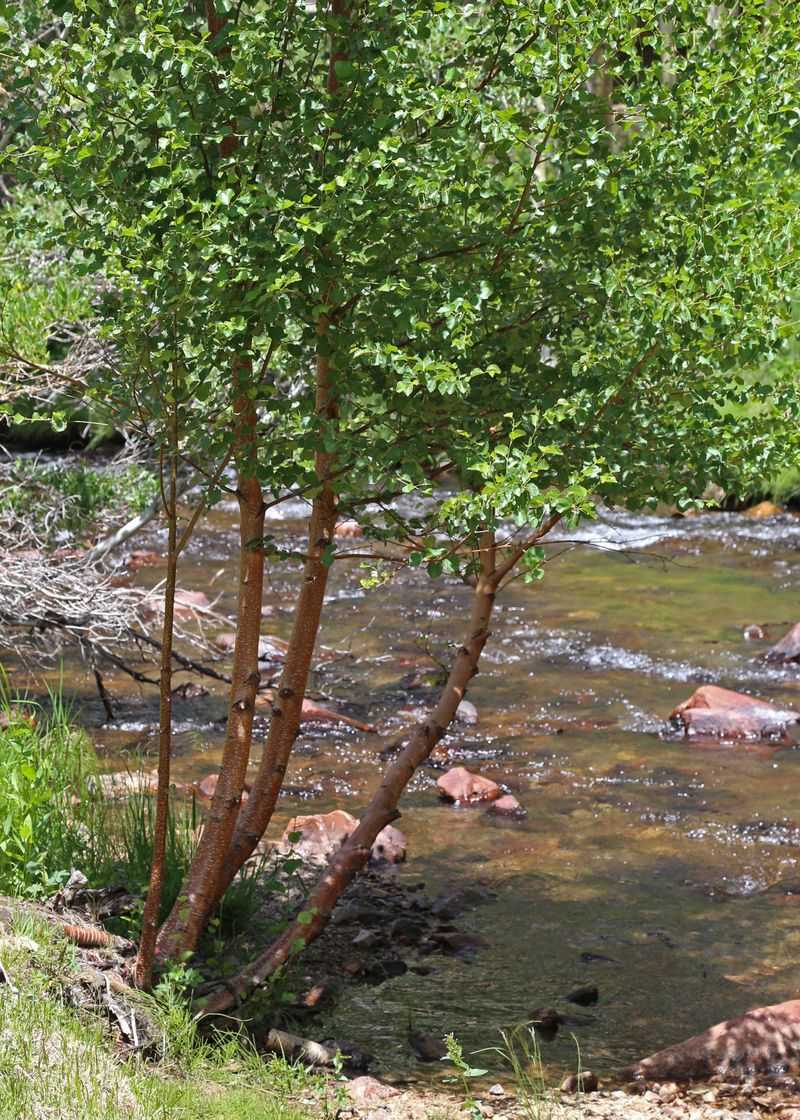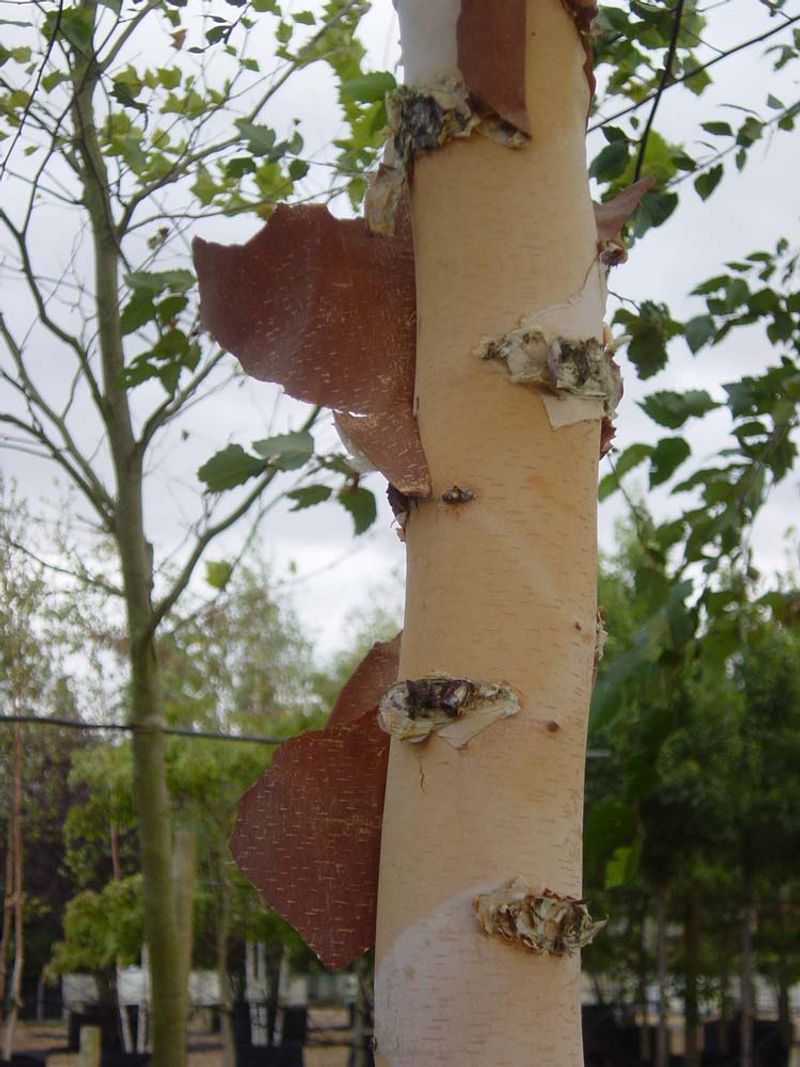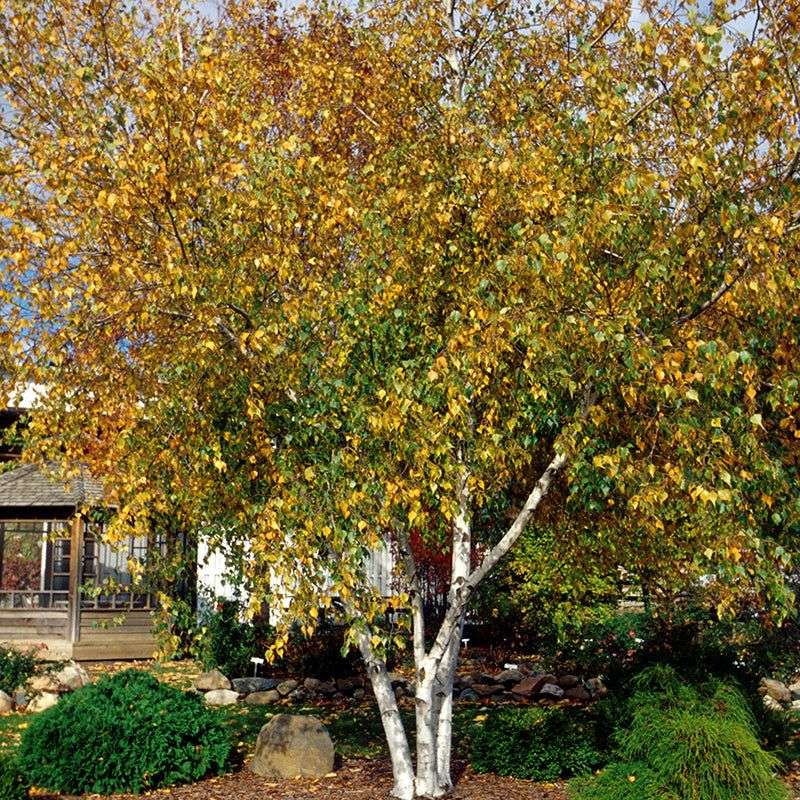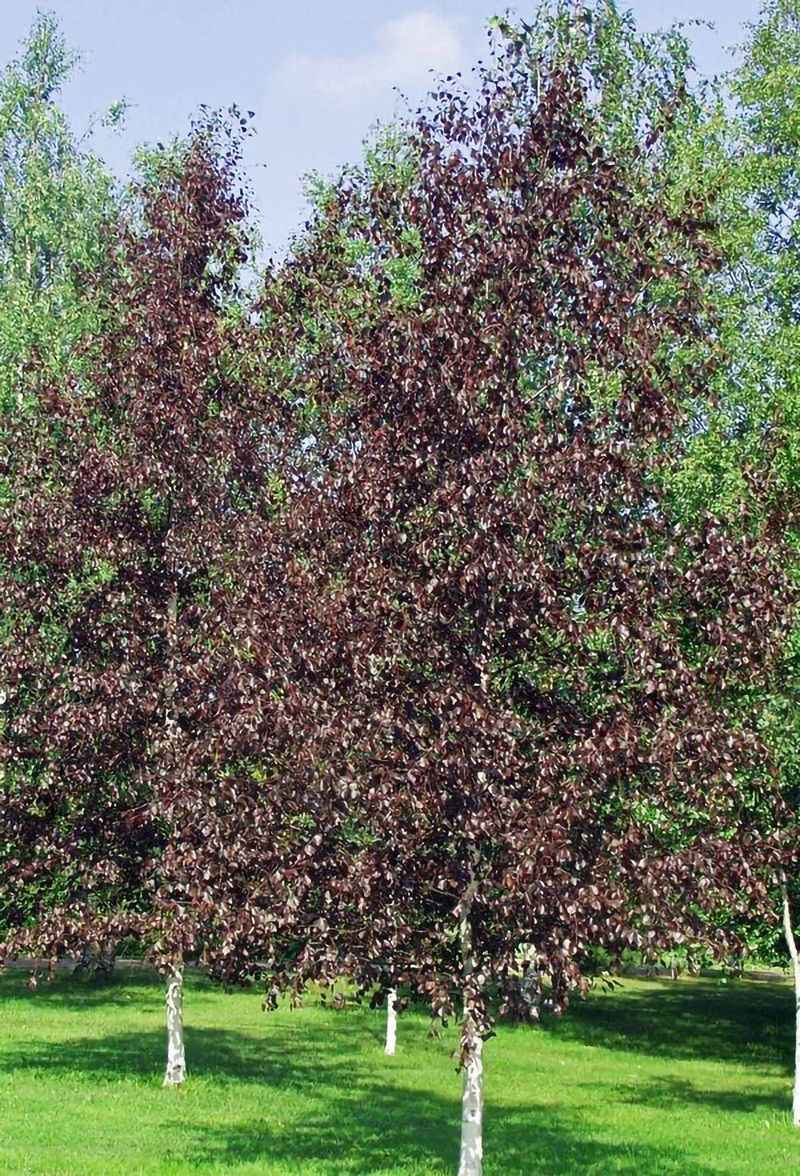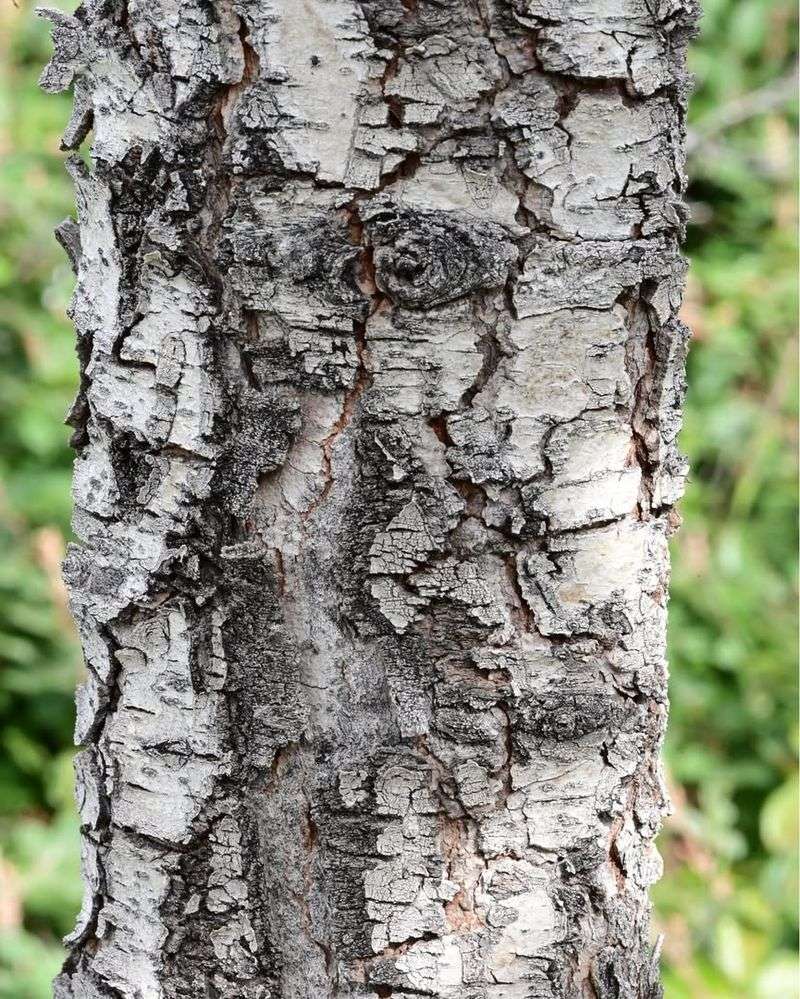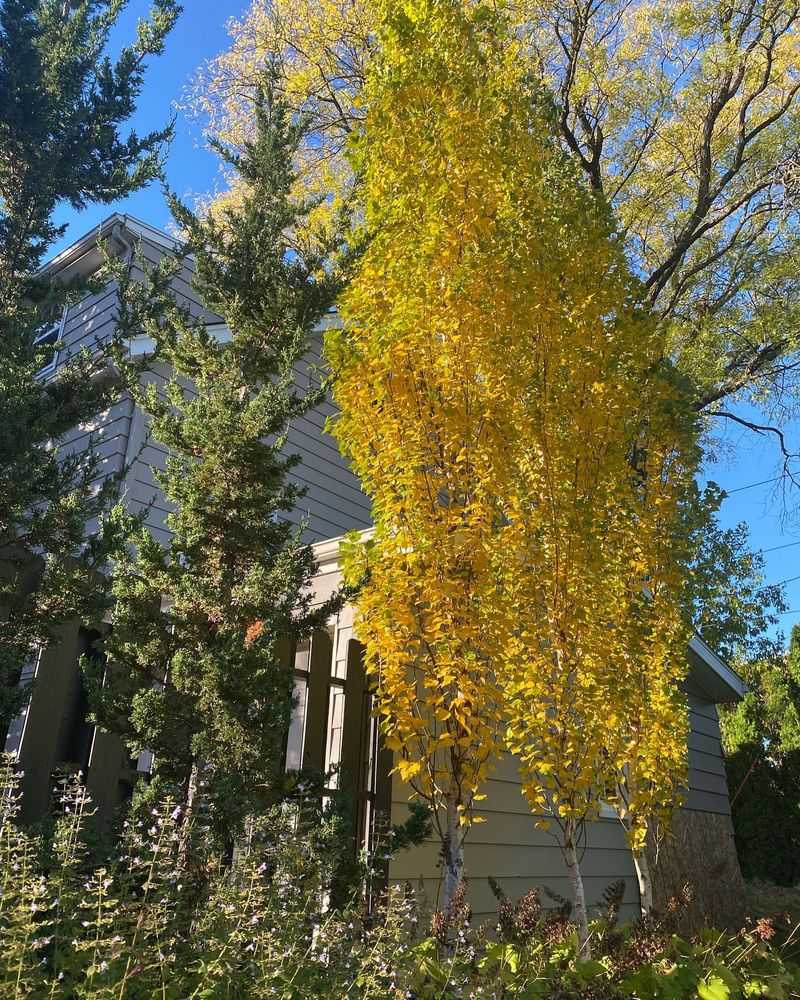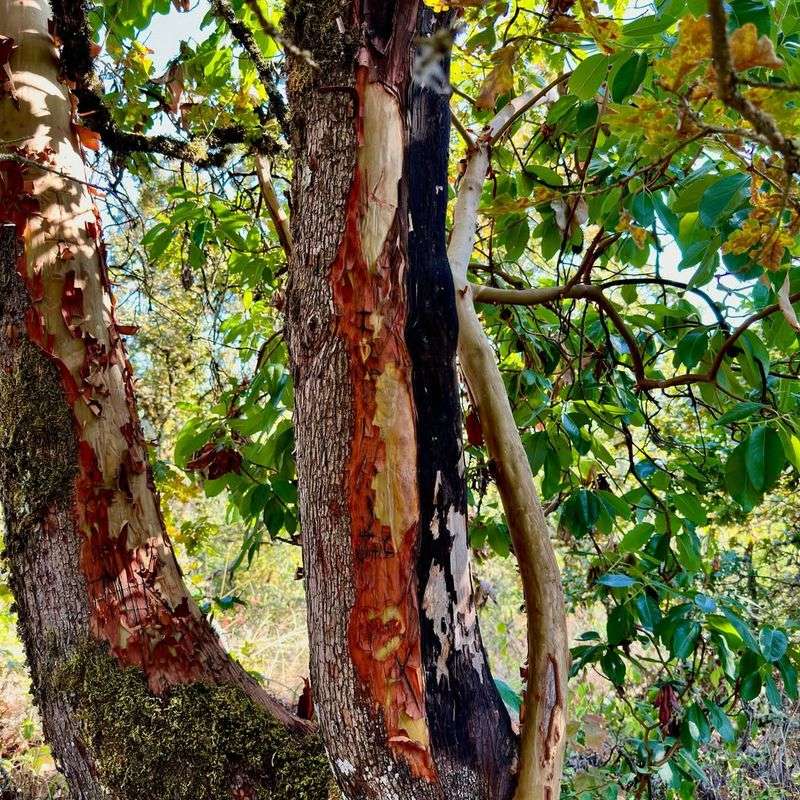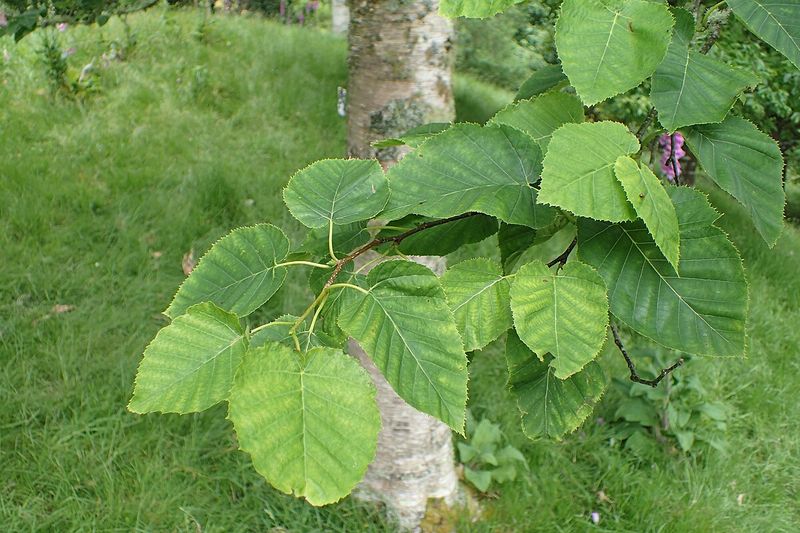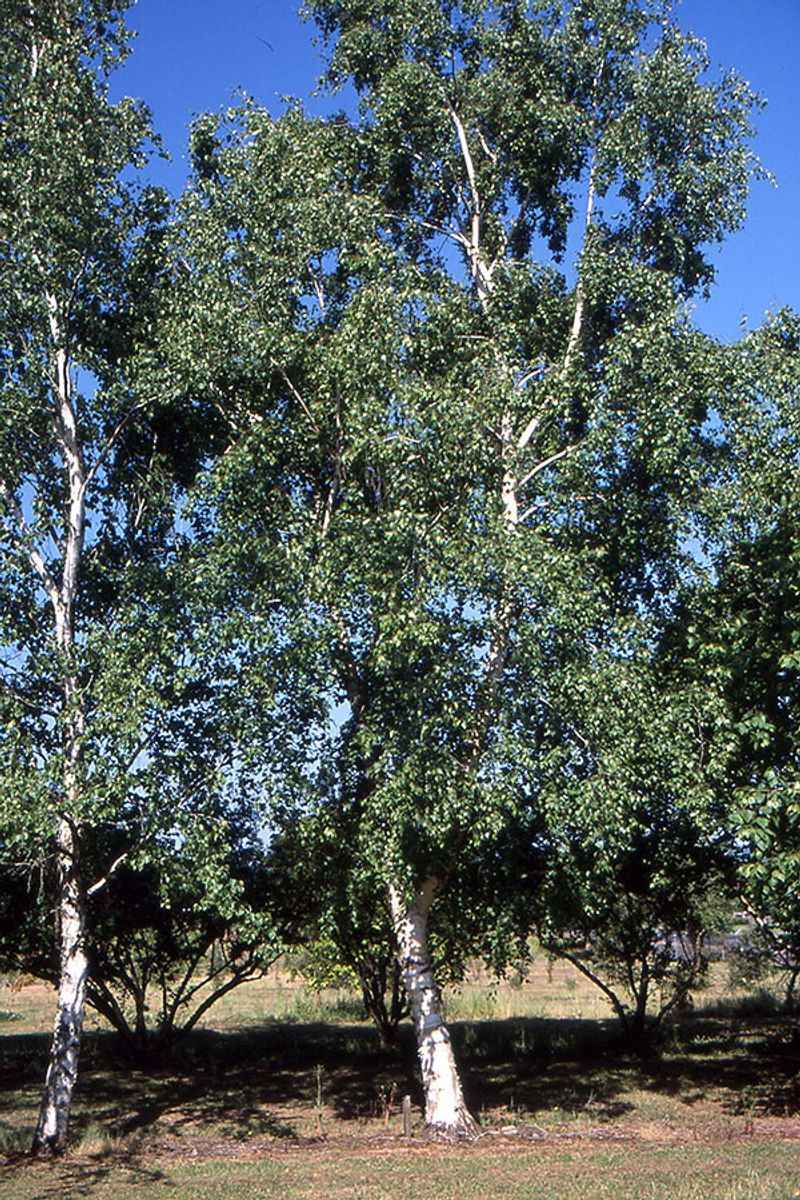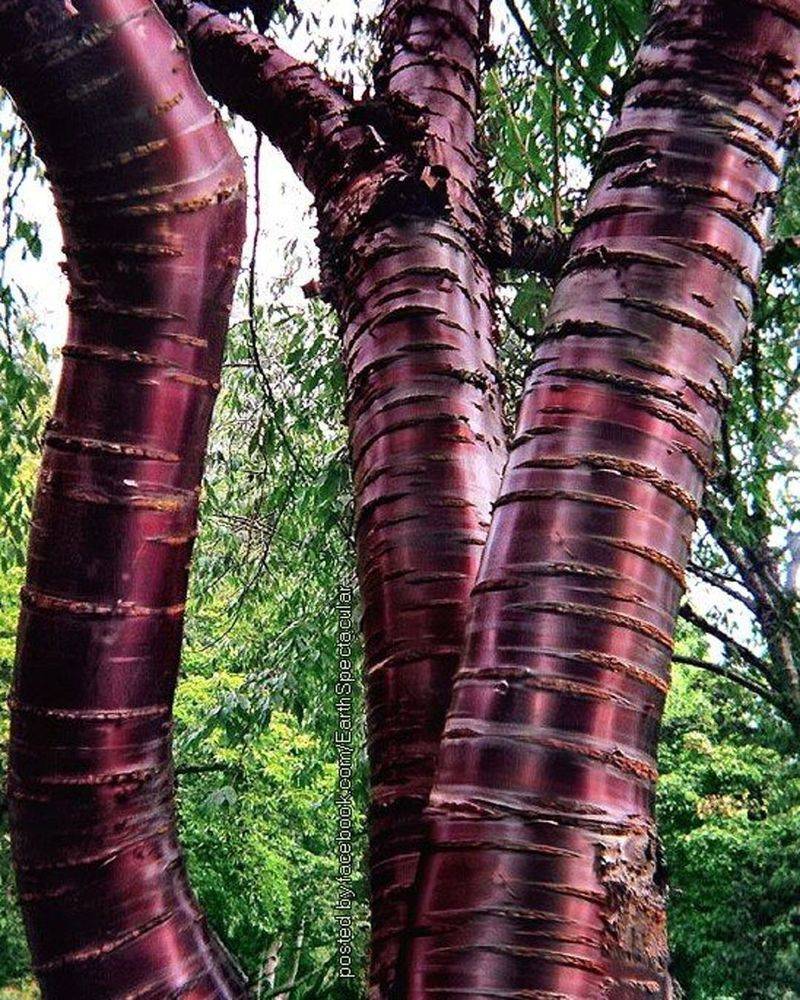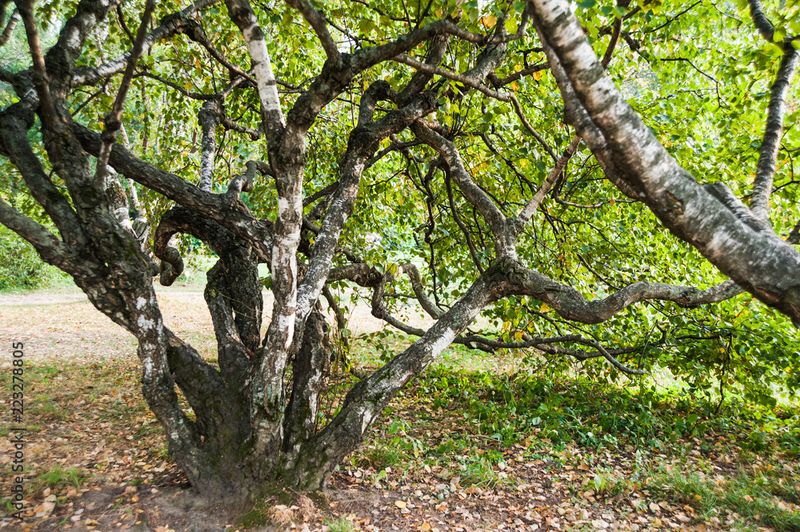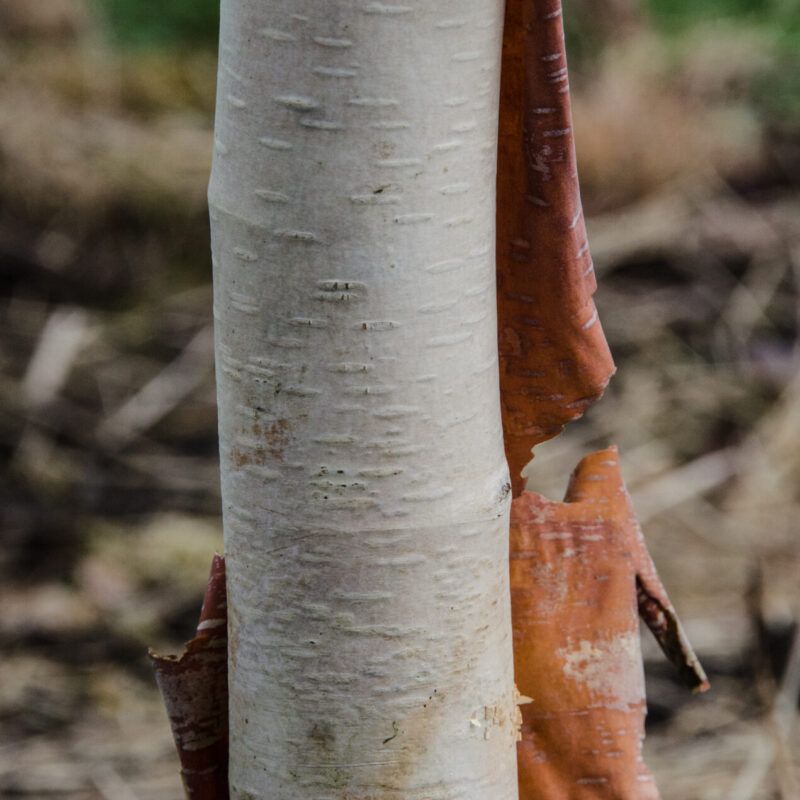Birch trees, with their striking bark and graceful foliage, offer a captivating presence in any landscape. Known for their resilience and adaptability, these trees not only enhance the beauty of gardens but also provide habitat for wildlife. From their shimmering leaves in summer to their intricate bark patterns in winter, birch trees ensure a year-round spectacle for gardeners and nature enthusiasts alike.
1. Silver Birch
Often referred to as the “queen of the woods,” the silver birch stands tall with elegant white bark that peels to reveal darker layers beneath. Its shimmering green leaves dance in the breeze, creating a soothing rustle. This tree is a favorite among gardeners for its fast growth and adaptability to various soil types.
In spring, the silver birch adorns itself with catkins, adding an extra layer of charm. As autumn approaches, its leaves turn a vibrant yellow, offering a spectacular display before they fall. This tree thrives in well-drained soil and full sun, making it an excellent addition to any garden.
2. Paper Birch
Imagine a tree that writes its own story—literally. The paper birch is famed for its smooth, white bark that peels away like parchment, revealing creamy layers beneath. This unique feature provides visual interest throughout the year.
During summer, its lush green canopy offers shade and tranquility. As temperatures drop, the leaves transform into shades of gold, a sight to behold against the stark white bark. This tree prefers cooler climates and moist, well-drained soil, making it a perfect choice for northern gardens.
3. River Birch
Unlike its white-barked cousins, the river birch boasts a cinnamon-colored bark that curls and peels in fascinating patterns. This tree thrives in wet conditions, making it ideal for planting near streams or damp areas in a garden.
Its leaves are a glossy dark green, providing a lush backdrop during the growing season. In the fall, they turn a warm yellow, enhancing the tree’s visual appeal. River birches are resilient to pests and diseases, offering beauty and hardiness in equal measure.
4. Yellow Birch
The yellow birch stands out with its golden, metallic-looking bark that seems to shimmer in the sunlight. This tree flourishes in cool, moist conditions, often found in rich, forested areas.
Its leaves are a bright green that darkens over the summer, providing a dense canopy. In autumn, the foliage turns a stunning yellow, mirroring the tree’s bark. The yellow birch is known for its durability, often growing in challenging environments where other trees might struggle.
5. Himalayan Birch
With a lineage traced back to the Himalayan regions, the Himalayan birch is as exotic as it sounds. Its bark is a pristine white, similar to the paper birch, but with a smoother texture.
The tree’s graceful branches host slender catkins, adding interest during the spring. As the seasons change, its leaves turn a soft, buttery yellow, creating a gentle autumn display. This birch is well-suited for cooler climates, thriving in well-drained soil and full to partial sunlight.
6. Bog Birch
Bog birch is a smaller species, often found in wetlands and marshy areas, where its roots can soak up the abundant moisture. Its bark is a warm reddish-brown, providing a striking contrast to the lush greenery it typically grows in.
The leaves are small and rounded, creating a dense canopy that offers ample shade. In autumn, they transform into shades of orange and red, lighting up the landscape. Bog birch is incredibly hardy, capable of withstanding cold temperatures and fluctuating water levels.
7. Dwarf Birch
Dwarf birch might be small in stature but it packs a punch when it comes to resilience. Often found in tundra regions, it thrives in cold and windy conditions where few others can survive.
Its compact form and tiny, rounded leaves make it a unique addition to gardens looking for something different. During the fall, its foliage takes on an orange-red hue, adding warmth to chilly landscapes. Dwarf birch is perfect for rock gardens or areas with poor soil.
8. Japanese White Birch
Elegance defines the Japanese white birch, with its slender, arching branches and strikingly white bark. This tree is often used in Japanese gardens, where its graceful form complements the serene landscape.
Its leaves are a lovely green, turning a vivid yellow in autumn, enhancing its beauty. The Japanese white birch is not only ornamental but also robust, capable of withstanding varying climates. It’s a versatile choice for gardeners looking to add a touch of the East to their landscapes.
9. Gray Birch
Gray birch is known for its resilience, often establishing itself in poor, sandy soils where other trees falter. Its bark is smooth and silvery, providing a lovely sheen that catches the light.
The leaves are triangular and delicate, fluttering easily in the wind. Their transformation to a pale yellow in fall is subtle yet charming. Gray birch is a pioneer species, often among the first to populate cleared or disturbed sites, showcasing its adaptability and tenacity.
10. Water Birch
Water birch thrives near streams and rivers, making it a natural choice for those looking to enhance water features in their gardens. Its bark is a dark, reddish-brown, smooth to the touch, and adds depth to its surroundings.
The tree’s leaves are a vibrant green, creating a rich tapestry during the growing season. As the year progresses, they transition to a gentle yellow, heralding the arrival of autumn. Water birch is not only beautiful but also supports wildlife, offering food and shelter for various species.
11. Erman’s Birch
Native to the Far East, Erman’s birch brings a touch of the exotic to any garden. Its bark is a striking white, often adorned with horizontal lenticels that add texture and interest.
The leaves are bright green, providing a lush canopy that offers shade and beauty. In the fall, they turn a soft yellow, creating a delicate contrast with the bark. This birch is hardy and adaptable, flourishing in a variety of soil types and climates, making it an excellent choice for adventurous gardeners.
12. Silver Shadow Birch
The Silver Shadow birch captivates with its ethereal beauty, featuring smooth, white bark that seems to glow in the moonlight. This tree’s delicate, slender branches create a graceful silhouette, making it a standout in any landscape.
Its leaves are a vibrant green, transitioning to a golden yellow as fall approaches. This birch is not only visually appealing but also hardy, capable of thriving in various conditions. It’s an excellent choice for those seeking a touch of elegance and whimsy in their gardens.
13. Whitespire Birch
Ideal for urban gardens, the Whitespire birch offers a neat, upright form coupled with stunning white bark. It’s perfect for adding vertical interest to any space, with its tidy appearance and minimal maintenance requirements.
The leaves are a lush green, turning a soft yellow in the autumn, providing seasonal interest. Whitespire birch is resistant to many common pests and diseases, making it a reliable choice for city dwellers looking to introduce a touch of nature into their concrete surroundings.
14. Crimson Frost Birch
Crimson Frost birch is a showstopper, with its stunning white bark contrasting beautifully against deep crimson leaves in the fall. This dramatic transformation makes it a favorite among those looking to create a bold statement in their gardens.
During the growing season, the leaves are a deep green, providing a lush canopy. As temperatures drop, the foliage turns a vibrant red, offering a rich visual tapestry. This birch thrives in well-drained soil and full sun, requiring minimal maintenance to shine.
15. Black Birch
Black birch, also known as sweet birch, is famed for its dark, rugged bark that exudes a wintergreen aroma when scratched. This distinctive feature, along with its robust nature, makes it a favorite among nature lovers.
The tree’s leaves are a vibrant green during the growing season, transitioning to a warm yellow in the fall. Black birch is adaptable, thriving in a variety of soil types and conditions. It’s a perfect choice for those seeking a tree with a strong presence and unique characteristics.
16. Chinese Red Birch
The Chinese red birch is a visual delight, with its coppery-red bark adding warmth and color to any setting. Often used in Asian-inspired gardens, this tree’s striking appearance is complemented by delicate green leaves.
As the seasons change, the foliage turns a soft yellow, creating a gentle contrast with the bark. This birch is hardy and adaptable, capable of thriving in various climates and soil conditions. It’s an excellent choice for gardeners looking to introduce a touch of exotic elegance to their landscapes.
17. Western River Birch
Western River birch is perfect for those seeking a tree that thrives in wet conditions. Its multiple trunks and dark, curling bark create a unique visual texture, making it a standout in any landscape.
The leaves are a rich green, providing a lush canopy during the growing season. As fall approaches, they transition to a warm yellow, adding seasonal interest. This birch is not only beautiful but also resilient, capable of withstanding floods and erosion, making it ideal for riverbanks and other damp areas.
18. Parkland Pillar Birch
Parkland Pillar birch is a compact wonder, offering a narrow, upright form perfect for smaller gardens or tight spaces. Its distinctive shape provides vertical interest, drawing the eye upward.
During the growing season, the leaves are a lush green, turning a bright yellow in the fall, creating a striking display. This birch is not only ornamental but also hardy, capable of thriving in various climates with minimal care. It’s an ideal choice for those looking to add elegance and structure to their gardens.
19. Red Birch
Red birch stands out with its vibrant red bark, providing a splash of color in any forest setting. This eye-catching feature is complemented by lush green leaves during the growing season.
As autumn arrives, the foliage turns a soft yellow, offering a gentle contrast with the bark. Red birch is adaptable and hardy, capable of thriving in various soil types and conditions. It’s a perfect choice for those looking to introduce a unique and vibrant element to their landscapes.
20. Betula Maximowicziana
Betula maximowicziana, or the Monarch birch, reigns supreme with its smooth, white bark and broad, spreading canopy. This majestic tree provides ample shade and beauty, perfect for large gardens or parks.
The leaves are a vibrant green, creating a lush environment during the growing season. In the fall, they turn a golden yellow, offering a stunning seasonal display. This birch is hardy and adaptable, capable of thriving in a variety of conditions, making it a versatile choice for many landscapes.
21. Betula Platyphylla
Betula platyphylla, known as the Asian white birch, is revered for its striking white bark and delicate foliage. Its graceful branches create a soothing presence, perfect for serene woodland settings.
The leaves are a soft green, turning a gentle yellow in the fall, adding a touch of warmth to the landscape. This birch is hardy and adaptable, capable of thriving in various climates and soil conditions. It’s an excellent choice for gardeners looking to introduce a sense of calm and beauty to their environments.
22. Birch Bark Cherry
Despite its misleading name, the Birch Bark Cherry is not a birch, but its bark resembles that of birches with a coppery-brown hue. This tree is a showstopper in spring, covered in delicate white blooms.
The leaves are a glossy green, providing a lush backdrop during the growing season. As autumn approaches, they transform into shades of red and gold, offering a final burst of color. This tree is perfect for those looking to add a unique and beautiful element to their gardens.
23. Twisted Birch
Twisted birch brings a touch of whimsy to the garden, with its contorted branches that create an intriguing silhouette. The bark is a smooth white, adding to its unique charm.
The leaves are a soft green, turning a gentle yellow in the fall, enhancing its visual appeal. This birch is not only ornamental but also hardy, capable of thriving in various climates and soil conditions. It’s a perfect choice for those looking to add a playful and unique element to their landscapes.
24. Pink Birch
With its soft pinkish bark, the pink birch is a romantic addition to any garden. This tree is a favorite among those looking to create a dreamy, romantic garden setting.
The leaves are a vibrant green, providing a lush backdrop during the growing season. As autumn approaches, they turn a soft yellow, adding a gentle contrast with the bark. Pink birch is not only beautiful but also resilient, capable of thriving in various conditions.
25. Mountain Birch
Mountain birch is a rugged, resilient tree often found in high-altitude settings where few others can thrive. Its bark is rough and textured, adding character to the landscape.
The leaves are a vibrant green, providing a lush canopy during the growing season. As fall approaches, they turn a warm yellow, enhancing the tree’s visual appeal. Mountain birch is not only hardy but also supports wildlife, making it a valuable addition to natural habitats.

